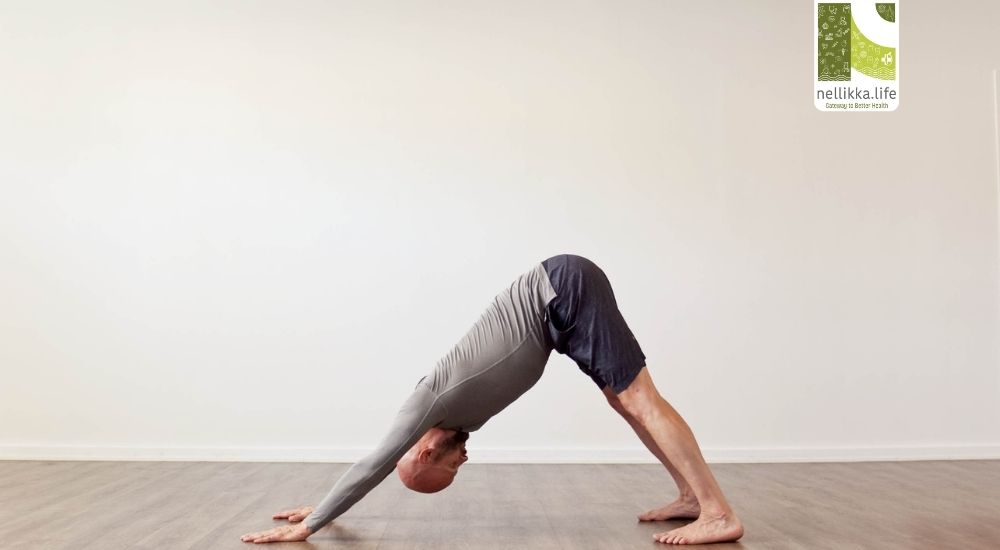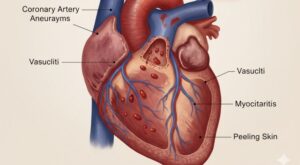Adho Mukha Svanasana: Science, Benefits & Anatomy

Among the foundational poses in yoga, Adho Mukha Svanasana (Downward‑Facing Dog) stands out for its multifaceted therapeutic effects. Classified as an inversion pose and integral to both Hatha and Vinyasa traditions, it engages multiple muscle groups, enhances circulation, supports core stability, and promotes mental wellbeing
Biomechanics & Muscle Activation
A 2014 EMG-based study assessed core muscle activity in 11 yoga poses, including Downward Dog. Results showed strong activation of the external oblique, rectus abdominis, and longissimus thoracis—confirming its utility for core strengthening and rehabilitation protocols
Musculoskeletal & Functional Benefits
Adho Mukha Svanasana delivers simultaneous strengthening and stretching:
Strengthens: shoulders, arms, quadriceps, ankles, and wrists
Stretches: hamstrings, calves, lats, spine, and arches
Helps improve posture, spinal alignment, and joint flexibility
Cardiovascular & Lymphatic Effects
Being a mild inversion, the pose stimulates baroreceptors in the neck, promoting vagal activation and parasympathetic response. Clinical guides note a reduction in heart rate and blood pressure during prolonged holds
The pose’s inverted position also aids venous and lymphatic return, enhancing circulation to the brain and upper body
Mental Health & Stress Regulation
Research highlights that Adho Mukha Svanasana, as part of yoga sequences, triggers the relaxation response, combating mild depression, anxiety, and insomnia.
The inversion provides cerebral perfusion and calms the nervous system.
Physiological Insights from Yogic & Western Traditions
Modern physiology and traditional yogic concepts align on several effects:
Activation of core stabilization muscles for spinal support (verified via EMG).
Inversion-induced parasympathetic activation via baroreceptor engagement.
Stretching of posterior body chain to relieve tension and assist digestion.
Clinical Considerations & Contraindications
Careful application is needed in certain populations:
- High blood pressure, glaucoma, and retinal disorders — inversion may raise intraocular pressure .
- Wrist or shoulder injuries, carpal tunnel syndrome — use modified poses like Dolphin Pose or blocks [1]
- Pregnancy & osteoporosis — practice under supervision with modifications
Clinical Applications
Adho Mukha Svanasana is suited for:
- Core and postural rehabilitation following musculoskeletal injuries.
- Stress and mood disorders, as part of restorative yoga interventions.
- Sedentary lifestyle correction through hamstring and spine stretching.
- Inversion-safe protocols in prehypertension and mild cardiovascular care.
Summary Table
| Benefit Domain | Key Findings & Evidence |
|---|---|
| Core Strength | EMG shows significant activation [2] |
| Flexibility & Stretch | Hamstrings, calves, spine |
| Cardiovascular Regulation | Promotes vagal tone |
| Mental Well‑being | Reduces stress, boosts relaxation |
| Cautions | IOP risk, joint strain, pregnancy |
Adho Mukha Svanasana is a scientifically validated therapeutic asana with applications spanning muscular strength, flexibility, autonomic regulation, and mental health. When practiced mindfully and with proper modifications, it offers a low-risk, high-value tool for rehabilitation, wellness, and preventive health.
Reference : How to Master the Downward Dog Pose to Stretch Out Your Tight Hamstrings




